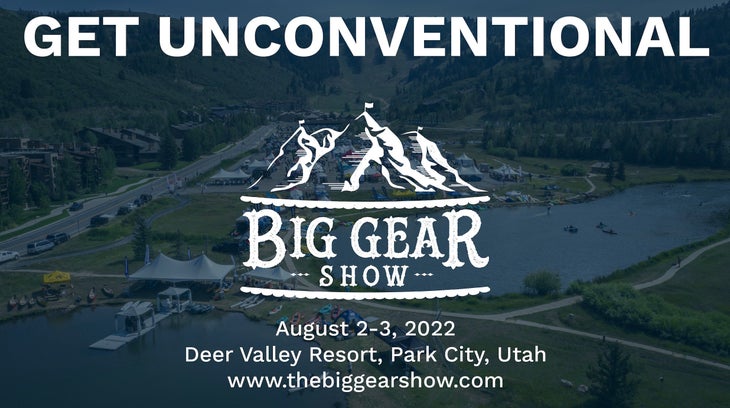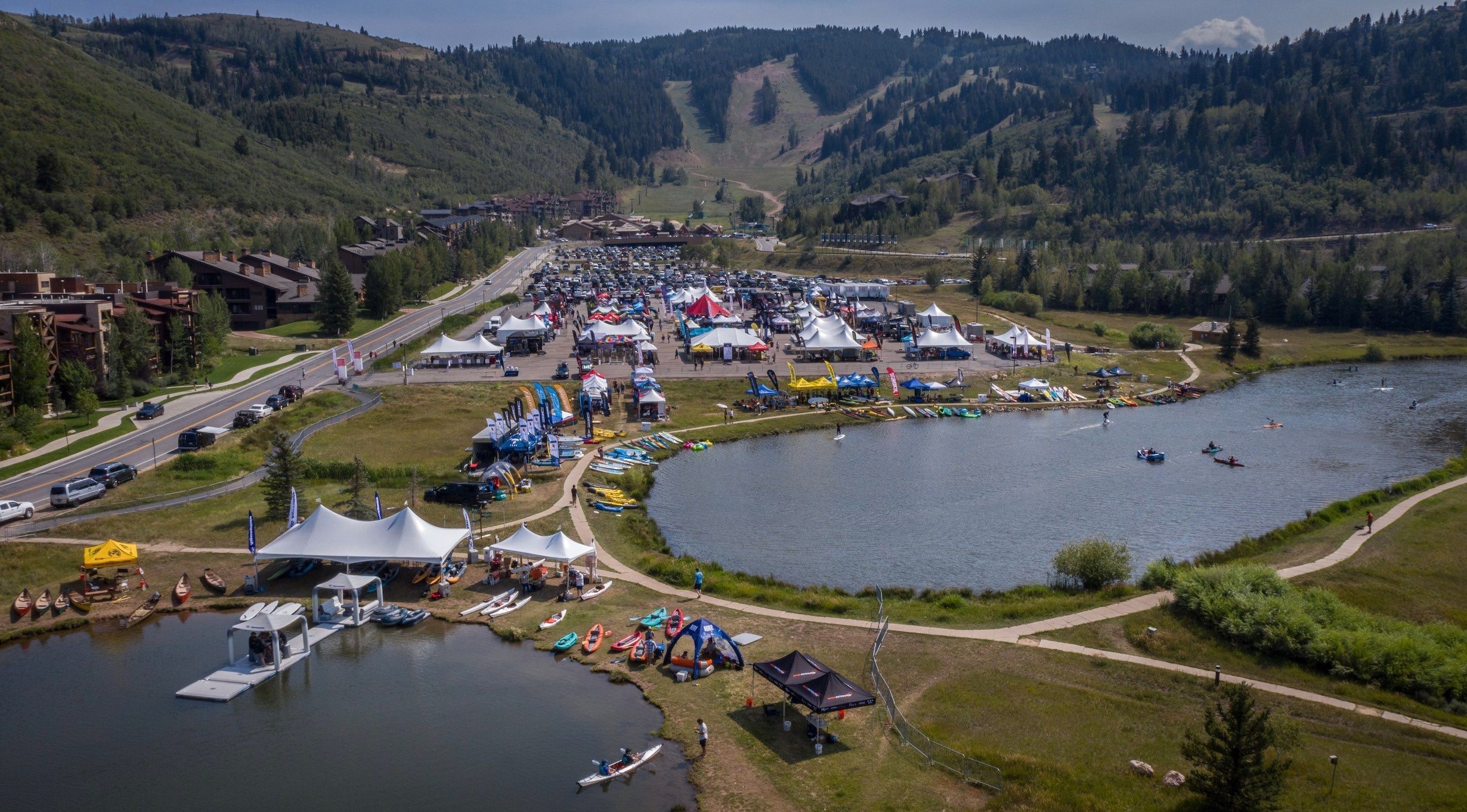In the early days, there was no gathering place for the outdoor industry. In fact, there was no outdoor industry. There was no trade association and no trade show.
The “outdoor industry” as we know it today was born in the ’60s out of the post-World War II economic boom. This was an era when many Americans had leisure time and discretionary income, and wanted to explore wild places. Some call this period the ‘Back to Nature’ movement, coinciding with cultural trends in art, film, music, and a growing environmental awareness. The gear used back then was mostly Army-Navy surplus gear that was sturdy enough but not friendly for venturing deeper, higher, and further into the outdoors. Early pioneers of higher-quality gear catered to rich adventure seekers climbing and skiing the high mountains. L.L. Bean, Holubar, Eddie Bauer, and REI were early suppliers of mountaineering equipment.
In the late ’60s and early ’70s, companies like The North Face, Chouinard Equipment, Patagonia, Jansport, EMS, �����ԹϺ��� 16, and Kelty started innovating gear that helped people go deeper into the outdoors.
Super Show Era: Late ’60s through Early ’80s
Eventually, these outdoor companies started attending an annual tradeshow called the Super Show. Based in Chicago, the Super Show was everything sports related. This was our industry’s first experience with tradeshows; we were blended into the sporting-goods world, a generalization that eventually became cumbersome and illogical—outdoor buyers had to hunt and peck for outdoor gear among basketballs, jockstraps, and aisles of irrelevant products.
Efficient Order-Writing Era: Early ’80s to Early 2000s
In 1981, Action Sports Retailer opened its doors with Outdoor Retailer following suit the year after. These shows represented an era of efficiency in order writing. For three days, a retailer could meet with several dozen of the top brands and write many of their orders for the coming year. Some brands, including Prana and Arc’teryx in the early days, were only available for order writing at tradeshows. Retailers could replace weeks of individual brand visits, meet with the hottest new companies, and write the bulk of their orders in a single three-day trip.
In 1989, Outdoor Recreation Coalition of America was founded and eventually evolved into Outdoor Industry Association, the industry’s first official trade group. What started off as a band of entrepreneurial companies was becoming an industry.
Conventional Show Era: Early 2000s to 2020
As the internet arrived, retailers no longer needed face-to-face meetings to place orders. This is when the value proposition of tradeshows changed from sales-driven to marketing-driven. Events like Grassroots Connect and regional rep shows maintained their purpose as order-writing shows, while discovery, networking, and trend spotting happened at national events. This also marked the period when shows grew the fastest.
This new marketing value proposition encouraged brands to go bigger and louder with their exhibits; booth sizes expanded to attract the attention of investors, competitors, buyers, and media. The shows became a place where brands demonstrated their business strength and cool factor to the broader market. This was very different from the previous era, in which booths were designed for maximum efficiency for line presentations with retailers. Pipe and drape was replaced with custom lighting trusses and CAD-designed modular builds. Booths sometimes cost upwards of six figures, even though they were pulled out of storage just twice a year and usually replaced every couple of years, as messaging and colorways changed.
The Present: Post-Pandemic Reevaluation
The last two years have taught us that, at least in the short term, outdoor companies can drive sales and marketing with few or no in-person events. During this period of reflection (and booming sales across categories), many companies have reevaluated whether they actually need tradeshows. But as this evolution takes place, one thing is becoming clear: our industry still wants to gather, we just want to do it differently than before.
We’ve learned that the conventional model no longer serves the industry; it’s expensive, wasteful, doesn’t work for the retailer, and doesn’t connect with outdoor professionals in an authentic way.
represents a dramatic departure from the conventional model; we want to deliver a retailer-centric event at an amazing value to exhibitors that captures the spirit of outdoor culture. We have deep experience in producing meaningful outdoor events. As current and former retailers, we know how to drive value for the retail audience. As a small but mighty team of outdoor industry players, we bring authenticity to every touch point of the show experience. We’re still learning a lot, too; as this new show model gains attention and traction in the broader, more inclusive outdoor-recreation scene, we remain nimble and we’re always listening closely to what our community wants.

Our value proposition as a show is simple. First, we’re focused on specialty retailers. Second, we break down the old categorical silos between bike, outdoor, paddle, and motorized. Last, we deliver maximum value with a new financial equation that emphasizes people—and the gear that gets people outdoors.
The Future: Focus, Format, Flexibility (and Less Fluorescent Lighting)
Focus is the key for future events. Being all things to all customers isn’t a successful business model. Outdoor business is too broad for everything to happen under one roof and most organizations simply can’t get all their business done at one show. We believe that, in the future, outdoor companies will attend more events focused on particular needs.
Some of these events will have a hyper-focused value proposition, some will be consumer events, some will be trade-only, and others will belong to a new blended category that we call B2Both. Curation will be key, and with more show models to choose from, more sophisticated ROI measures will evolve.
Changes in the show landscape will continue as the new value of face-to-face emerges. Brands are already investing in mobile showrooms and popup vehicles that can be used year-round and serve as booth, meeting space, billboard, and key-account relationship driver all in one. Booth sizes will shrink by going outside, and they will generate less waste, both in cost and in environmental footprint.
Flexibility will be the new norm. Events need to be ready to pivot quickly in response to consumer needs, trends, and regulatory changes. What we saw during COVID won’t stop, and conventional shows that are stuck in an inflexible model won’t be able to adapt to the changing needs of the market.
To learn more about The Big Gear Show, head to . For outdoor exhibitor-related questions, contact: kenji@thebiggearshow.com. For paddle exhibitor-related questions, contact: sara@thebiggearshow.com. For bike exhibitor-related questions, contact: lance@thebiggearshow.com. For retailer-related questions, contact: dave@thebiggearshow.com.


